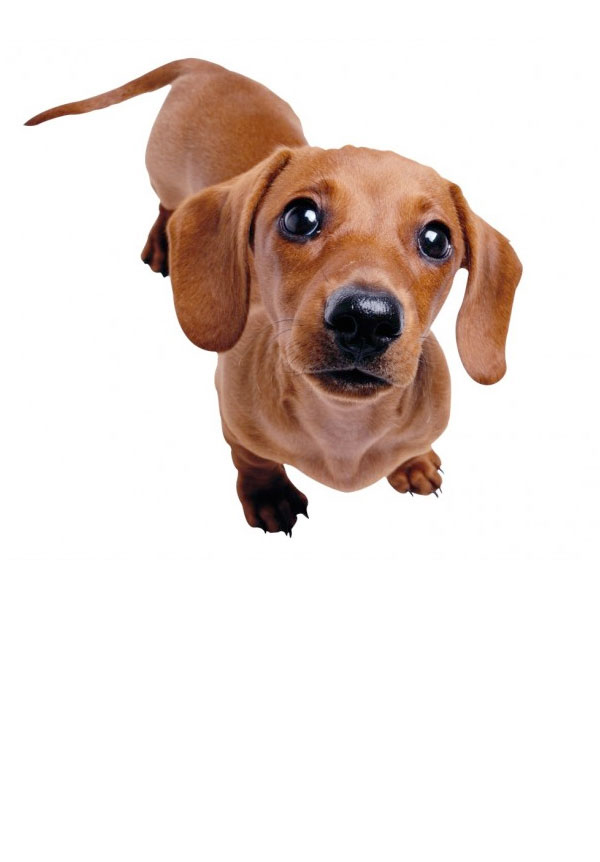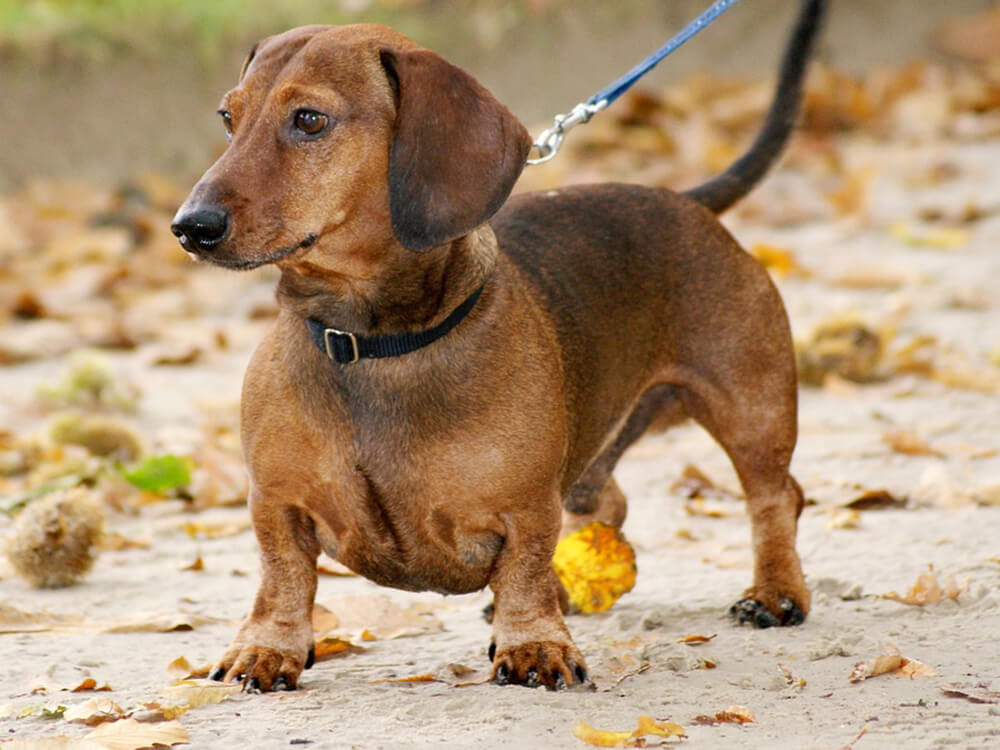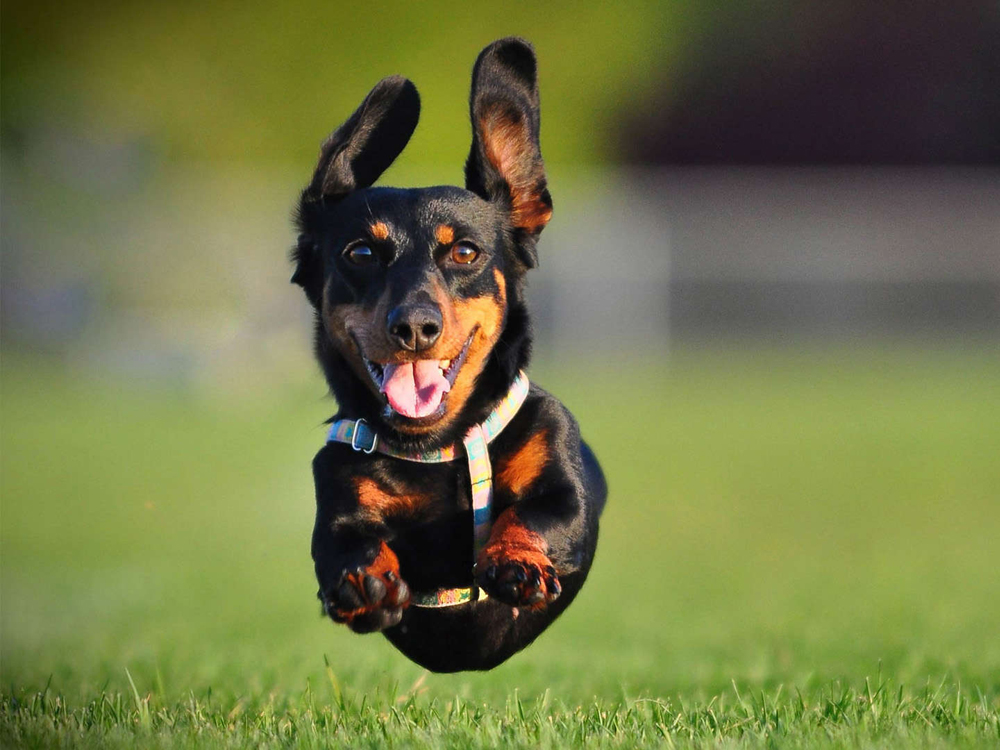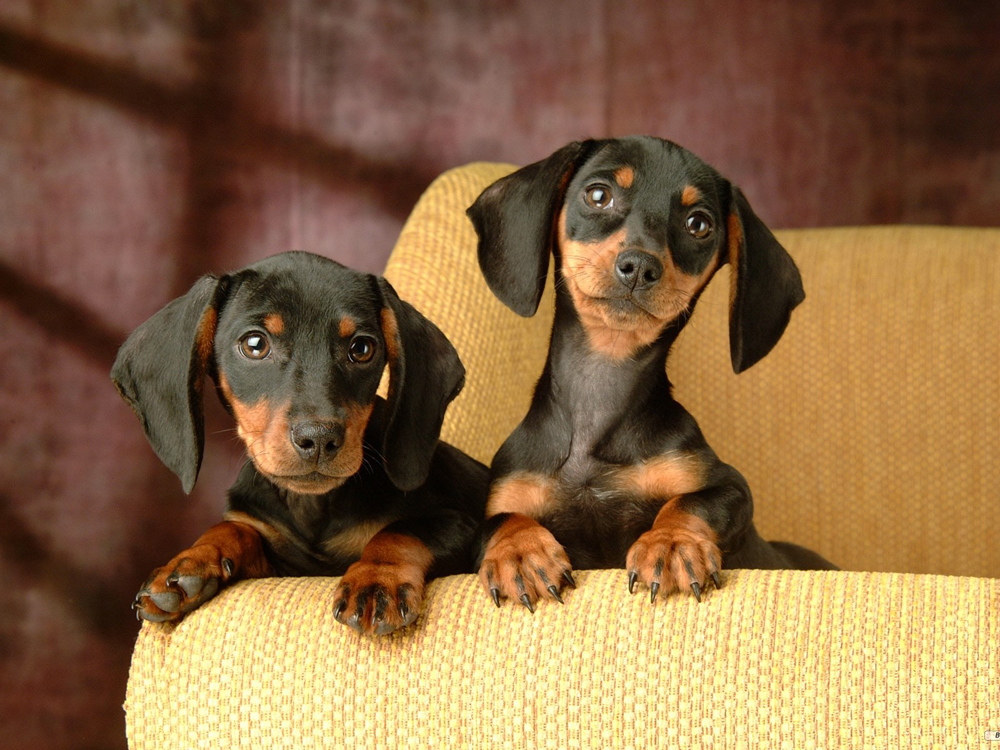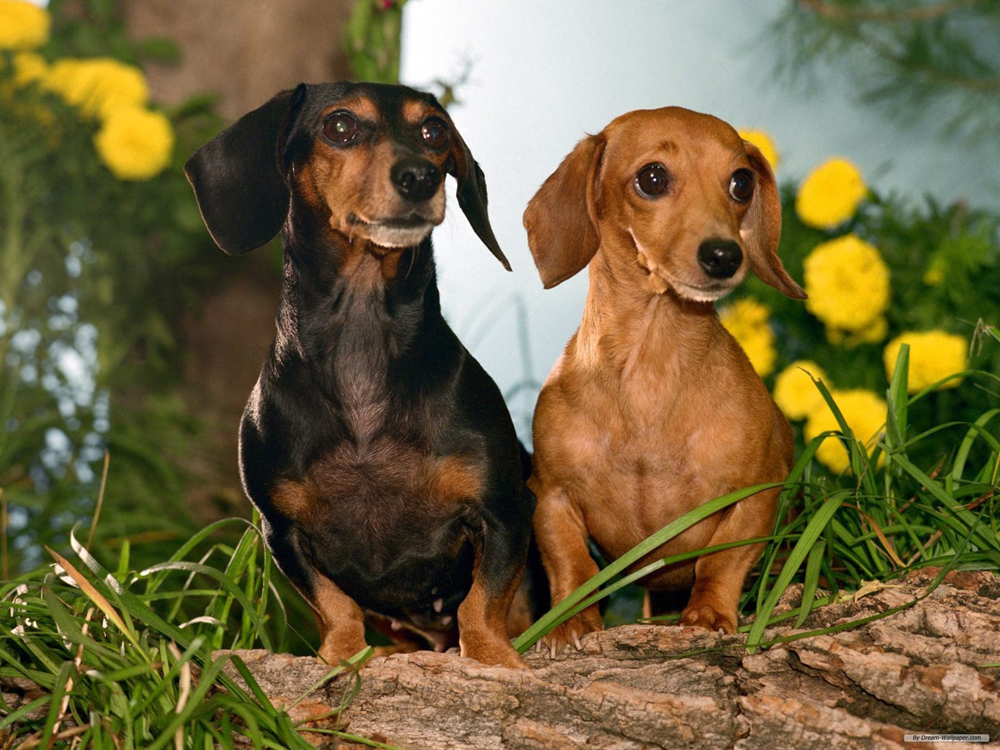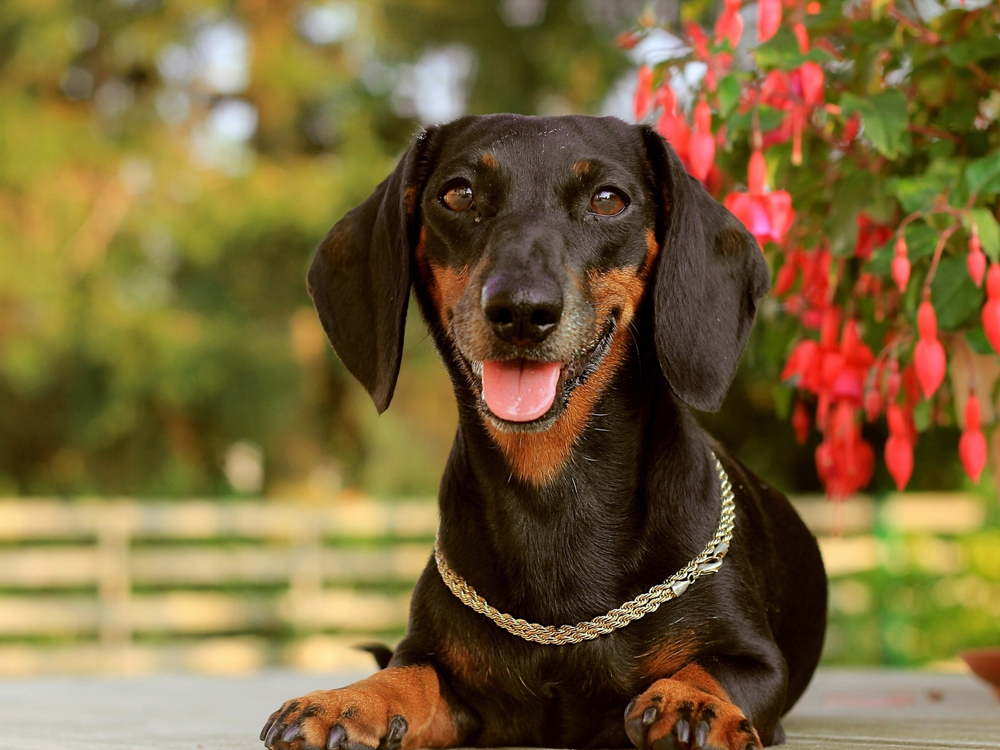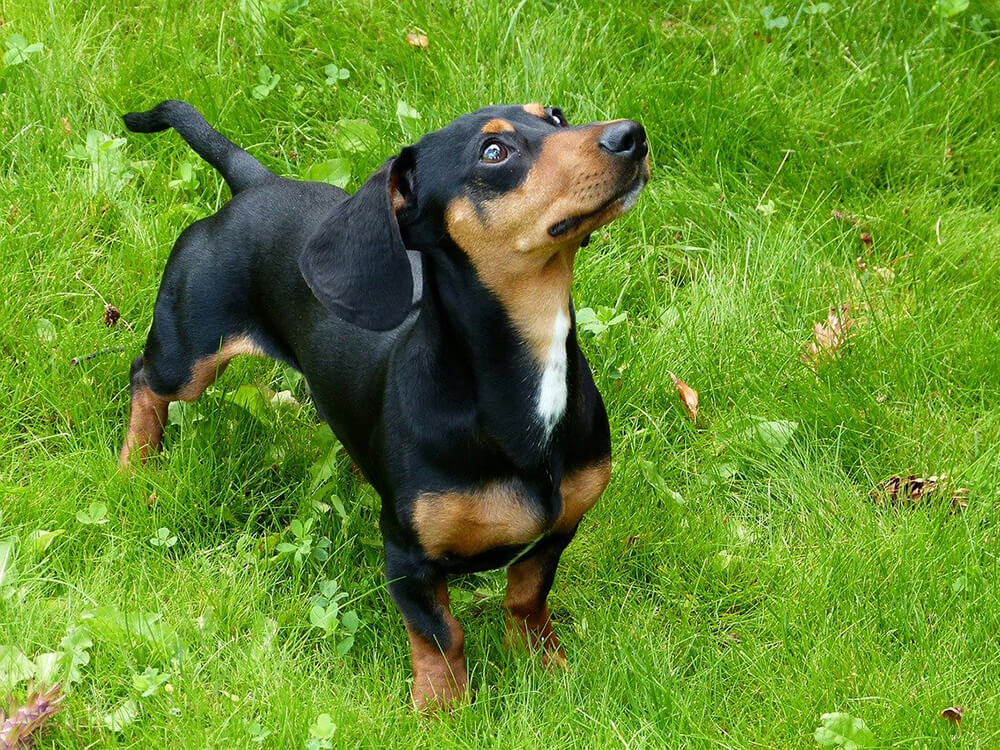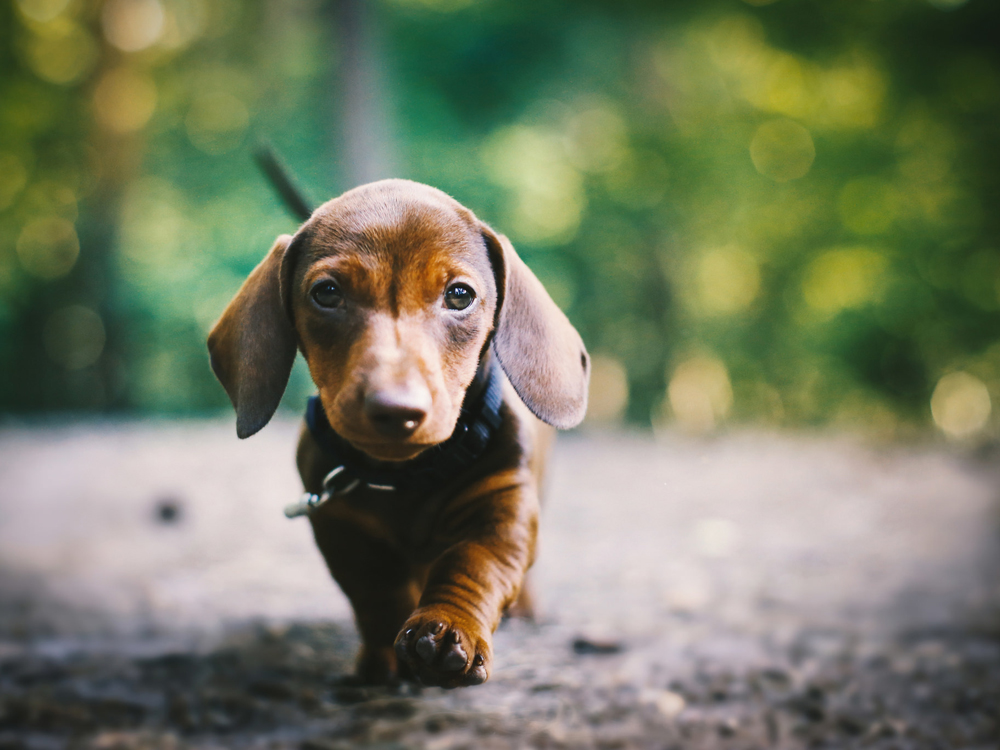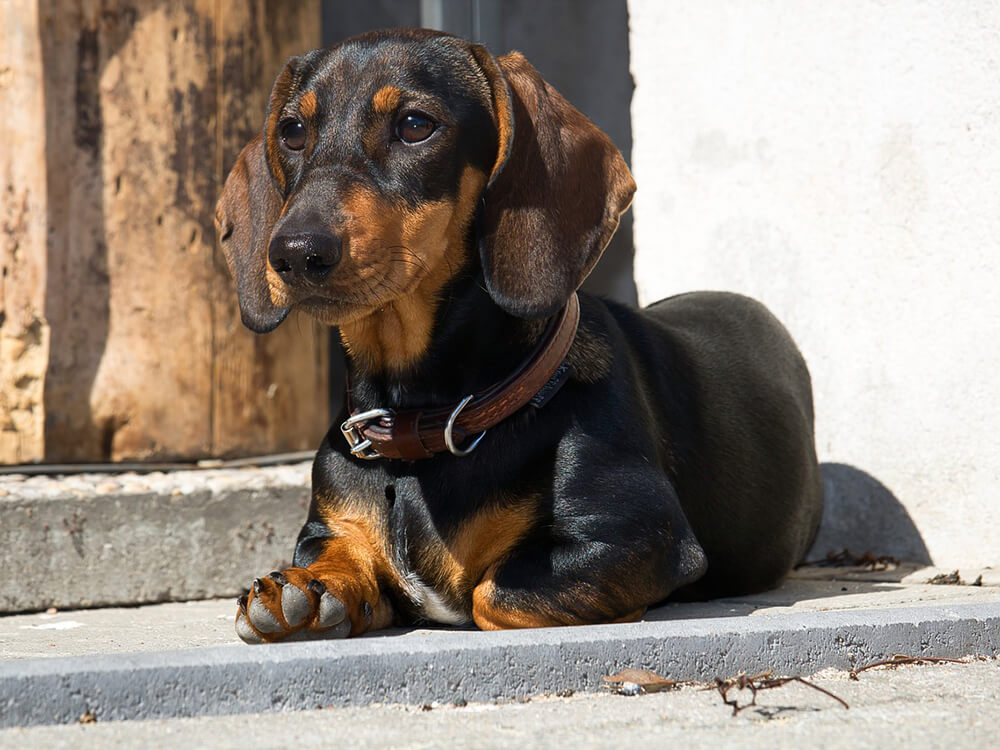
Dachshund Breed Pictures
Vital Breed Stats
| Height: | 20 - 22 cm M | 20 - 22 cm F |
| Weight: | 4 - 9 kg M | 4 - 9 kg F |
| Breed Group: | Toy Dog Group |
| Life Expectancy: | 13 - 15 years |
| KC Registered: | No |
Breed Characteristics
| Size: |  |
| Grooming: |  |
| Exercise Level: |  |
| Trainability: |  |
| Barking Level: |  |
| Good with Children: |  |
| Good with other pets: |  |
| Affectionate: |  |
| Protective: |  |
| Cost to Keep: |  |
Give a thumbs up if you love the Dachshund

0
More About the Breed
History
Dachshunds originally came from Germany and first existed during the 16th century. They was bred to hunt badgers and because of this role this, dog is literally called in German as the badger (dachs) hound (hund). The Dachshund was prized for its ability to follow scent and determination to dig and hunt burrowing animals. The lineage of the Dachshund is unclear, but records claim that Schweisshund, (a type of Bloodhound), Basset Hounds and Beagles contributed to its heritage.
The breed was brought to England in 1840 when Prince Edward of Saxe-Weimar, a British military officer of German parents, gifted the breed to the Royal family. In 1859, the Dachshund breed became widely popular after the first ever dog show held in England. Queen Victoria helped its ascent to fame, being a huge fan of the breed.
World War II, however, saw a decline in the breed as it fell from favour being a dog with a connection to Germany. Luckily, a few breed enthusiasts helped the breed to survive and regain its popularity in the UK. Today, the Dachshund is still among the most popular small dogs in the UK, with its charming looks and loyal nature.
Appearance
Often called Sausage dogs, Dachshunds have short legs and long bodies. They have a compact and well-muscled build with powerful front legs that are paddle-shaped, perfect for digging. They weigh 16 to 32 pounds and stand 20 to 27 centimetres. The Dachshund has a head that is narrowed with an arched skull and less prominent stop. With dark eyes, this dog breed has a complex expression that is almost soulful. It also sports a barrel-chest perfect for a loud and deep bark that is typically a characteristic of large dogs. Dachshunds use it well as they like to bark.
Dachshunds come in three coat varieties: smooth-shorthaired, longhaired and wirehaired. Accepted colours under The Kennel Club breed standard are black, cream, tan, brindle, chocolate, dapple, shaded red, and silver that is often combined for a two-colour coat.
Grooming
The Dachshund is a low-maintenance breed because it doesn't shed much. Nevertheless, weekly brushing is important to keep loose hairs from falling. The wirehaired Dachshund is an exception. Its wiry hair needs stripping at least twice a year.
It is important to keep an eye on the Dachshund’s droopy ears since they are more prone to bacteria build-up, which will potentially be infected if not cleaned. Longhaired and Wirehaired Dachshunds often have excess hairs in between pads, which must be trimmed regularly as well.
Temperament
Intelligence
Nutrition
- Senior and less active: up to 690 calories daily
- Typical adults: up to 780 calories daily
- Physically active/working dogs: up to 860 calories daily
Feeding
Health
Exercise
Cost of Ownership
When you buy a Dachshund, make sure it is from a reputable breeder, which will cost around £800 to over £1,300. Pet insurance is another cost to factor in your dog care budget, with a basic cover costing around £20 a month and a lifetime cover around £40 a month.
When it comes to food, Dachshunds are low-maintenance dogs because of their coat and size. Their small size means they don't eat much compared to large dogs. For food costs, you may spend anywhere from £30 to £40 a month. Veterinary consultations must not be ignored with an excuse that your dog looks healthy. Dachshunds need routine health checks, vaccinations, boosters, and spaying, which will likely cost you £1,000 per year.
Other costs will include dog supplies and equipment (such as leash, collar, bed, bowl and toys) to provide your Dachshund with a safe and comfortable home.
Is a Dachshund Right for You?
- The Dachshund is smart but difficult to train.
- It is stubborn and needs proper guidance that can only be accomplished by an experienced dog owner.
- It gets on well with children and other dogs it grew up with.
- Dachshunds are brave, loyal and fearless but often rash.
- Its drive is high so walks in the park must not be off-leash.
